The 1980 penny, or the Lincoln memorial cent, is a US currency form valued at $0.01. Although most consider it worthless, some 1980 pennies can sell for thousands in the auction house. It’s just a matter of finding a feature (or error) that makes it valuable.
If you’re wondering whether your 1980 possesses this high value, make sure to read all the details below. Who knows? You might strike gold (or copper, for this matter.)
1980 Penny Details
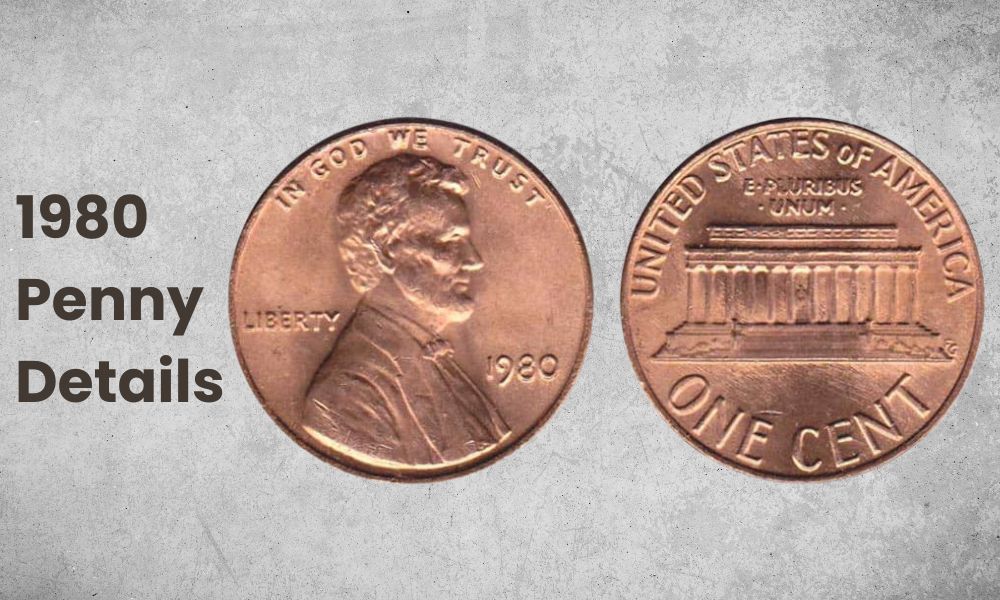
- Category: Lincoln Memorial Cent/Penny
- Mintage: 7,414,705,000
- Minted at: Philadelphia (no mint mark)
- Designation: MS
- Strike Type: Business
- Obverse Designer: Victor David Brenner
- Reverse Designer: Frank Gasparro
- Metal Composition: 95% Copper – 5% Tin and Zinc
- Diameter: 19 mm
- Mass / Weight: 11 grams
- Edge: Plain
- Coinage Years:1959-2008
Also Read: Top 19 Most Valuable Mexican Coins Worth Money
1980 Penny Value Chart
| Mint Mark | Good | Fine | Extremely Fine | Uncirculated | Proof |
| 1980 No Mint Mark Penny | $0.02-$0.03 | $0.02-$0.03 | $0.02-$0.03 | $1.16 | n/a |
| 1980 D Penny | $0.02-$0.03 | $0.02-$0.03 | $0.02-$0.03 | $1.16 | n/a |
| 1980 S Penny | n/a | n/a | n/a | n/a | $2.88 |
1980 Penny Value and Varieties Guides
The 1980 penny comes in three varieties: the no mint mark (Philadelphia minted), the D penny, and the S penny. Let’s discuss all of them below.
1980 No Mint Mark Penny
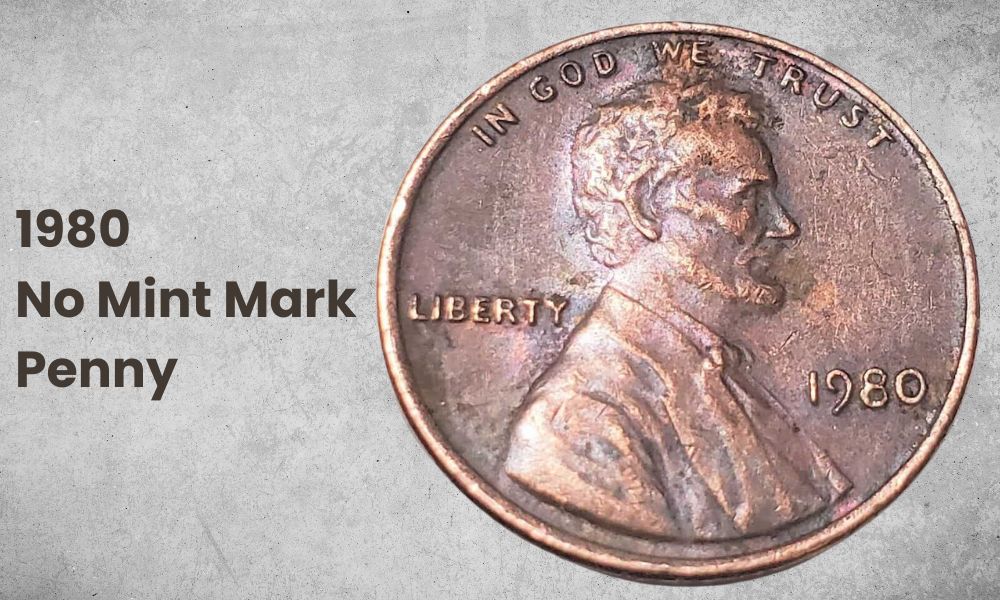
- Category: Lincoln Memorial Cent/Penny
- Mintage: 7,414,705,000
- Minted at: Philadelphia (no mint mark)
- Designation: MS
- Strike Type: Business
- Obverse Designer: Victor David Brenner
- Reverse Designer: Frank Gasparro
- Metal Composition: 95% Copper – 5% Tin and Zinc
- Diameter: 19 mm
- Mass / Weight: 11 grams
- Edge: Plain
- Coinage Years:1959-2008
The 1980 penny features the profile of President Abraham Lincoln, which Victor David Brenner created. Its design is said to mimic the bust made in 1909. His initials VDB can be found underneath the President’s bust.
The reverse, on the other hand, was prepared by Chief Engraver Frank Gasparro. Compared to other coins designed through a contest, Gasparro chose from the 23 models presented to him.
The Lincoln cent bears the motto “In God we trust” on top, while the word “Liberty” is minted on the left. The year of production (1980) is engraved on the right.
As the name suggests, this penny has no mint mark – compared to the D and S pennies listed below. However, it’s a known fact amongst collectors that no-mint-mark coins come from the Philadelphia location – which has produced 7.4 billion of these bad boys.
The obverse design features the Lincoln Memorial Building in the center. Near the shrubbery, you’ll find the initials FG for Frank Gasparro.
The coin also bears the motto “E Pluribus Unum” on top. The country’s name – United States of America – is written on the upper arc, while “One Cent” is listed below.
The Lincoln penny has a diameter of 19 mm and a thickness of 1.52 mm.
1980 D Penny
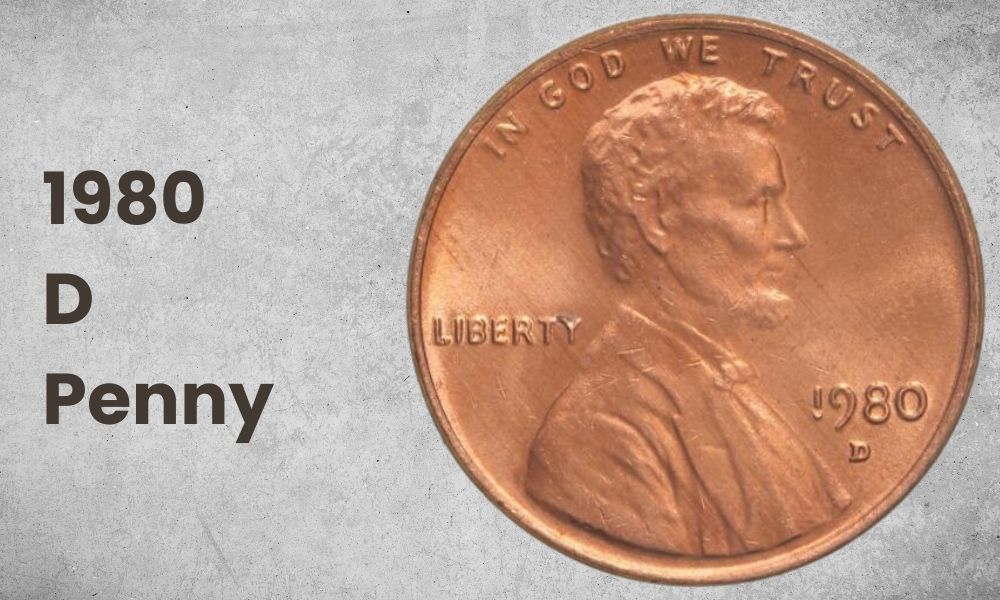
- Category: Lincoln Memorial Cent/Penny
- Mintage: 5,140,098,660
- Minted at: Denver
- Designation: MS
- Strike Type: Business
- Obverse Designer: Victor David Brenner
- Reverse Designer: Frank Gasparro
- Metal Composition: 95% Copper – 5% Tin and Zinc
- Diameter: 19 mm
- Mass / Weight: 11 grams
- Edge: Plain
- Coinage Years:1959-2008
The 1980 D penny comes with a ‘D’ mark under the year 1980. This label on the obverse means the coin was minted in Denver, which is located in Colorado. The Denver mint building itself was built in 1897 and is now listed under the National Register of Historic Places.
As with most 1980 pennies, it’s made with 95% copper and 5% tin and zinc. It weighs 3.11 grams, compared to the 2.5 gram-pennies manufactured from 1982 to present.
The highest price this penny (in MS 67 grade) has ever sold was $1,750.
1980 S Penny
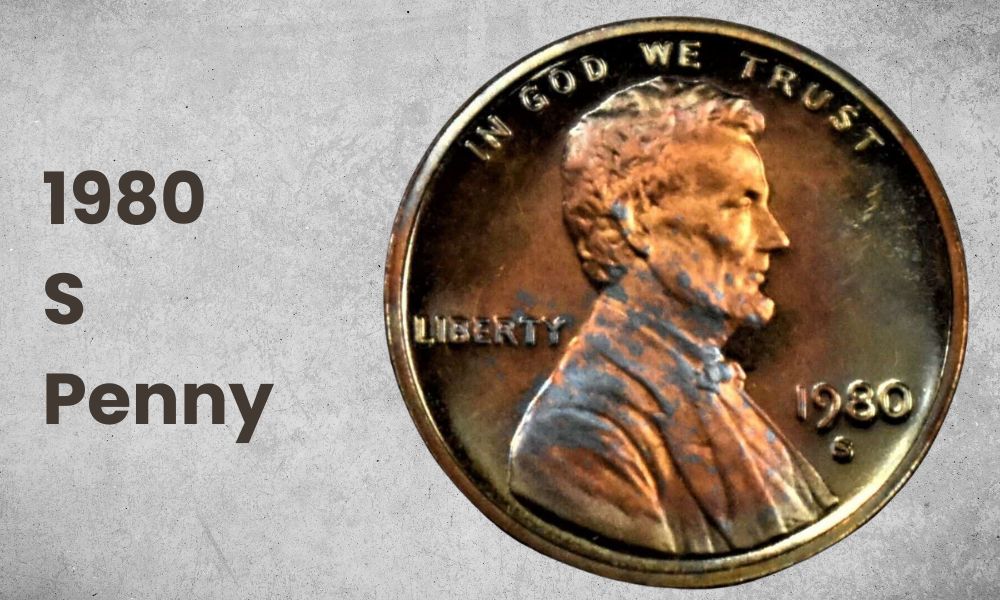
- Category: Lincoln Memorial Cent/Penny
- Mintage: 3,554,806
- Minted at: San Francisco
- Designation: MS
- Obverse Designer: Victor David Brenner
- Reverse Designer: Frank Gasparro
- Metal Composition: 95% Copper – 5% Tin and Zinc
- Diameter: 19 mm
- Mass / Weight: 11 grams
- Edge: Plain
- Coinage Years:1959-2008
The 1980 S penny is a proof coin, meaning it was struck with hand-selected planchets on special dies. It boasts of a fine finish, and it’s also graded as DCAM or deep cameo. This means its glossy and frosted features have a striking contrast.
These features – apart from the fact that only 3.5 million were produced – mean that this coin is more expensive than most.
In fact, a PR 70 1980 S penny was auctioned off for an impressive $2,050.
Also Read: Top 16 Most Valuable Old Chinese Coins Worth Money
1980 Penny History
The penny or one-cent coin is the lowest face-value US currency. First produced in 1787, this coin is believed to have lost all of its purchasing power due to inflation. And while some institutions deem these pennies burdensome, there are some that can make a pretty penny – figuratively – such as the 1980 Lincoln Memorial Cent.
Penny Design
The large pennies, which weighed as much as 13.48 grams, featured flowing hair chains and wreath designs in 1793. The Liberty cap design, meanwhile, was used from 1793 to 1796.
Plans from 1796 onwards included the draped bust, the classic head, the coronet, and the braided hair.
Small cents, on the other hand, featured the flying eagle and the Indian head until 1909.
Tradition dictated that only the Liberty image should appear on the coin, but the public demand to commemorate Lincoln prevailed. Since then, the penny has sported the president’s profile on the obverse – hence its name ‘Lincoln Memorial Cent.’
The Lincoln Memorial Building design on the reverse was added in 1959 – to commemorate Lincoln’s sesquicentennial birth anniversary.
The year 2009, Lincoln’s 200th birthday, saw four reverse designs. The design was shifted to the union shield the following year.
Penny Composition
From 1793 to 1795, pennies were made with 100% copper – so they weighed around 13.48 grams. Pennies from 1795 to 1857 also contained 100% copper, though they were lighter at 10.89 grams.
Copper content was reduced to 88% for pennies minted from 1856 to 1864. That said, it was increased to 95% for coins minted from 1864 to 1942.
The 1943 penny was made with zinc-coated steel due to wartime shortage, while the 1944-1946 coins were made with 95% copper and zinc.
Bronze was used for coins produced from 1947 to 1962, while gliding metal was used for coins made until 1982.
Due to the rising cost of copper, the price to mint the penny was double its value ($0.02.) As such, the penny was reconstructed to contain 97.5% zinc and 2.5% copper.
Nowadays, pennies are at their lightest weight ever at 2.5 grams.
Penny Color
One of the penny’s striking features is its color. It appears bright red when it’s newly minted – largely because of its copper content. After all, this metal appears orange-red in its original form. However, such pennies can transform to the color brown once it’s exposed to air. This is called oxidation, meaning the copper corrodes and produces a brown patina.
The value of pennies can depend on their color as well. If 95% of the area is in color red, it is categorized as ‘RD.’ But if it’s 95$ brown, it will be tagged as ‘BN.’
Coins that are placed somewhere in between are designated as ‘RB’ or red and brown.
Needless to say, pennies graded RD have the highest value. RB coins come next, with BN pennies at the bottom of the cost pyramid.
Also Read: Top 11 Most Valuable Canadian Coins Worth Money
1980 Penny Grading
1980 pennies, like other coins, are categorized as circulated, uncirculated, and proof. They are then graded further according to their wear and tear.
Circulated coins are graded as either good, very good, fine, very fine, or extremely fine. Uncirculated coins may be tagged anywhere under MS 60 to MS 70, and proof coins can get the same designation.
Also Read: Top 10 Most Valuable Foreign Coins Worth Money
Lists of 1980 Penny Errors
Coins are never perfect. Some may come with errors, but that actually makes them more valuable than most.
Here are some of the mistakes that you need to be on the lookout for:
1. 1980 Penny Double Die Error
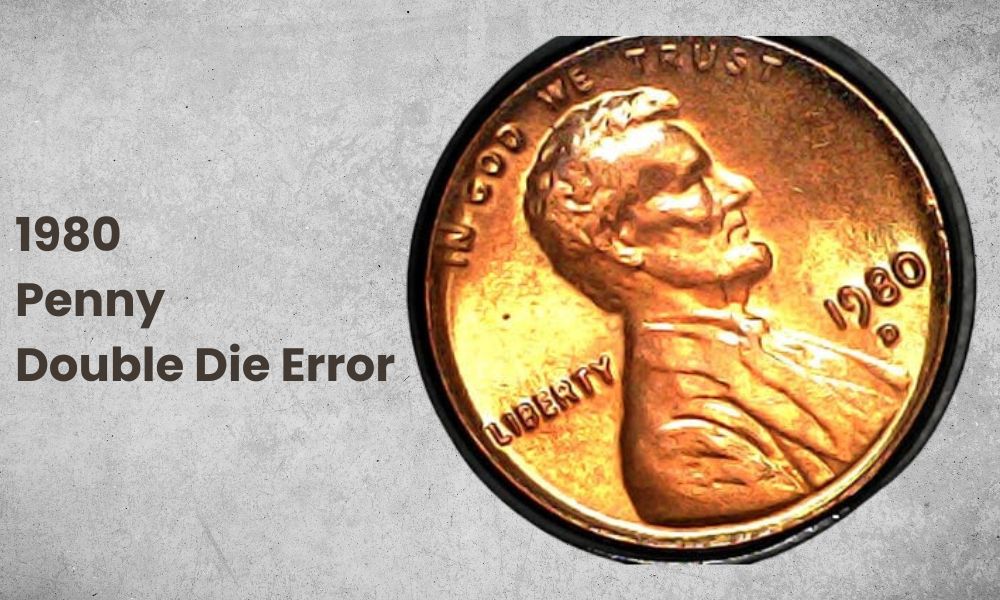
Some 1980 pennies bear a double die error, a mistake that happens during production.
As you see, the die needs to be struck several times to produce all the coin’s design elements. And, should the die move, the resulting image will be doubled.
Double die errors may affect either the obverse (front) or reverse (back) side of the coin.
Common 1980 penny double die errors involve the numbers 1 and 8 and the word Liberty on the obverse. And, if your coin has this kind of error, you can sell it quickly – even if it’s not red or in mint condition.
In fact, you can fetch anywhere from $3 to $4 for a poor-grade penny bearing this mistake.
But if you have an MS 67 1980 penny with a double die error, you can expect it to sell for as much as $2,500 at auction.
2. 1980 Penny Die Break Error
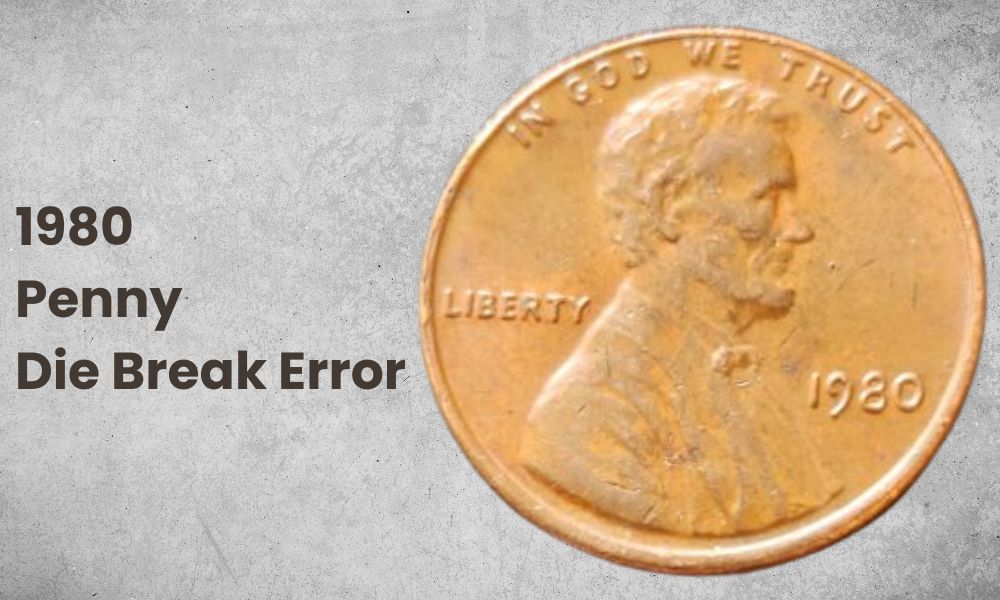
A die break error is earmarked by raised lines on the penny’s surface. It often affects Lincoln’s profile, or the corner of the Lincoln Memorial, for these parts are printed with the weakest parts of the die.
Some 1980 pennies have die cracks from Lincoln’s head to the rim, and as such are called ‘spiked head’ coins. There are some coins where LIncoln has cracks on the head, ergo they are called ‘cracked skull’ cents.
Some 1980 Lincoln cents also come with retained interior die breaks, which often affect the rim. As such, these mistakes are called ‘retained cuds.’
Note: the video above also shows a 1980 penny with a die break error.
3. 1980 Penny Struck on the Wrong Planchet Error
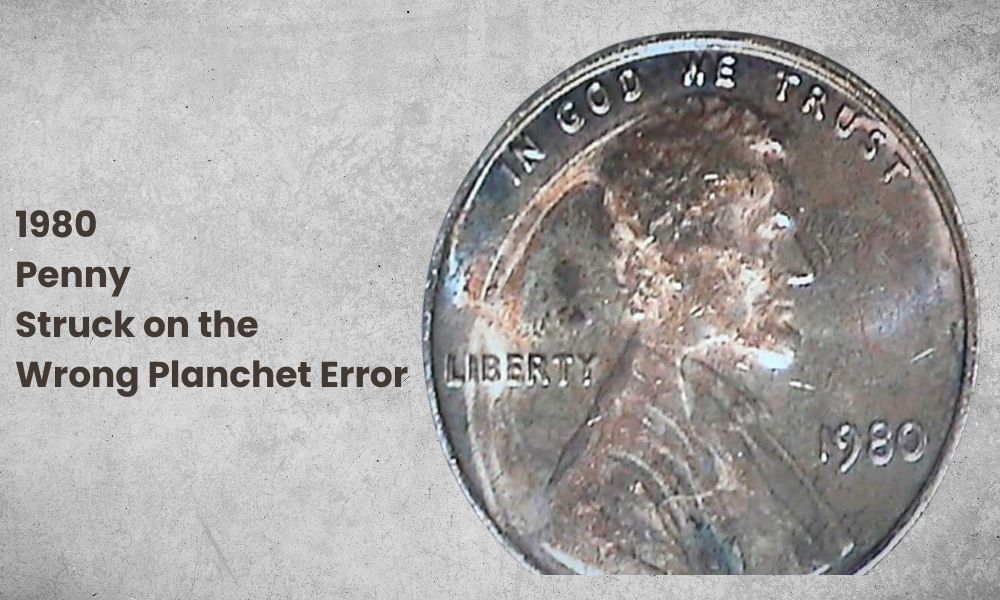
Some 1980 pennies have been struck on a planchet that’s been designated for another denomination. A good example is one coin that was struck on a Roosevelt dime, instead of the copper planchet.
True enough, this mistake has made the owner a whopping $1,000 right away.
Again, an example of this error may be viewed on the video link above.
4. 1980 Penny Striking Error
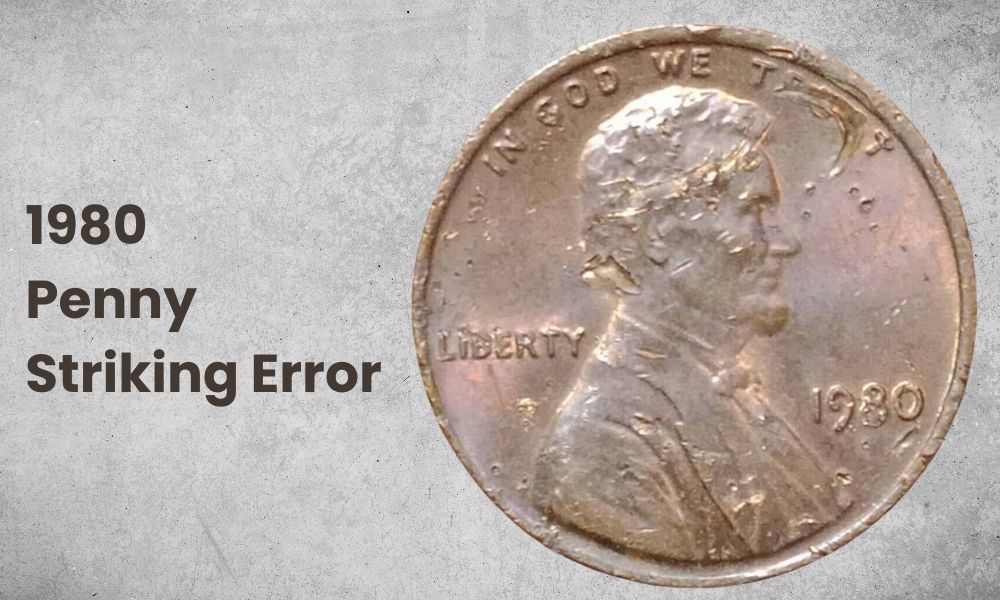
As with most coins, some 1980 pennies have been struck multiple times because they were left stuck on the press. The result is a striking error, which was recently seen in a Denver-minted coin.
The said coin was struck thrice, with the second and third blows being off-center.
Of all the penny errors in this list, this erroneously struck cent raked in the least money. It only sold for $345, but it’s not bad considering it was a $0.01-worth coin.
1980 Penny FAQs
How much is a 1980 penny worth?
The worth of the 1980 penny depends on various factors.
No-mint mark pennies, for example, cost $1.16 uncirculated. However, there is an MS 68 red coin that has been sold for $8,000.
1980 D pennies have the same uncirculated coin value, although an MS 67 grade of this kind has been sold for $1,750.
1980 S pennies are coins that have a proof worth of $2.88. However, a coin with a PR 70 has been auctioned off for a pretty $2,000.
How much is a 1980 S penny worth?
A 1980 S-proof penny is worth $2.88. However, a fully-struck and lustrous coin with a PR 70 grade has been sold for a whopping $2,000.
What is the error on the 1980 penny?
1980 pennies may be produced with any of the following errors:
- Double die error
- Die break error
- Struck on a wrong planchet
- Striking error
What makes a 1980 penny rare?
A 1980 penny is considered rare if it bears mistakes, such as the double die error, die break error, or striking error. 1980 pennies struck on the wrong planchet (Roosevelt dime) are also considered collectibles.
Are 1980 pennies pure copper?
No. 1980 pennies are made with 95% copper and 5% tin and zinc. Pennies that contain 100% copper are the ones produced from 1793 to 1857.
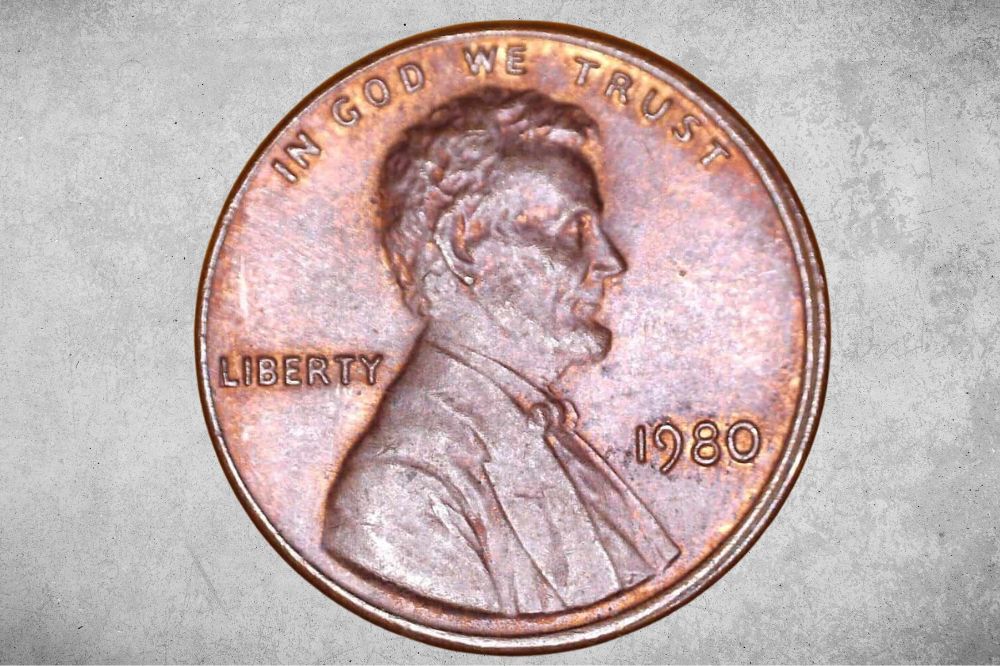
I have a silver, 1980 penny with no D or S under it. I was told to see if it was worth anything. And I have a PFENNING 1 BANK DEUTSCHE LANDER 1948.
I have a union shield penny that was struck on a dime planchet. Both sides have a smooth finish so there are no visible words or letters on either side. But you can see the clear silouette of Lincoln on the obverse & the obvious shield on the reverse. I wonder how much it’s worth.